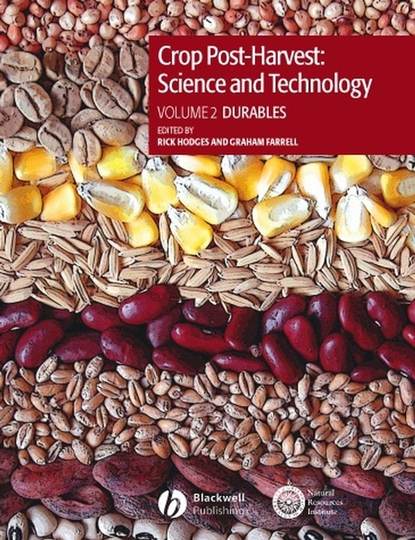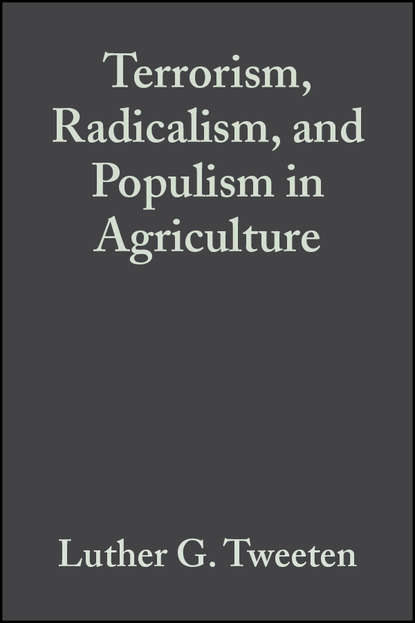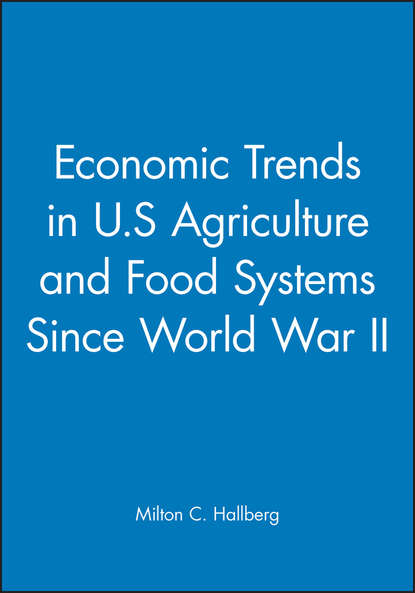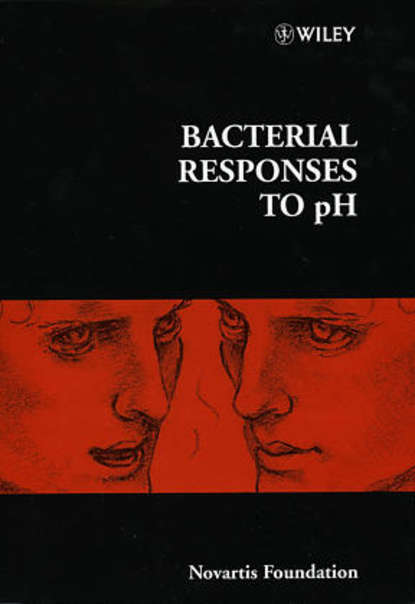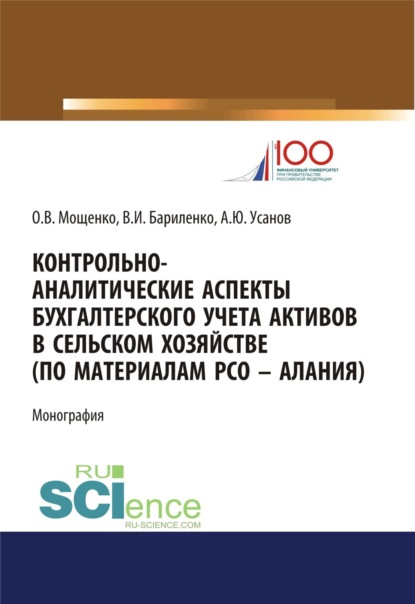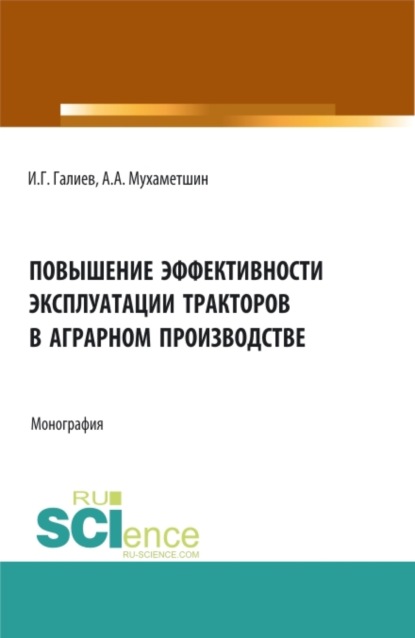Книга "Crop Post-Harvest: Science and Technology, Volume 2" является вторым томом в серии из трех книг, посвященных пост-урожайной науке и технологии. Она содержит ряд исследований о том, как долговременные продукты хранятся и реализуются на рынке. Компиляция этой книги была поддержана и одобрена Институтом природных ресурсов Университета Гринвича в Великобритании. Редакторы этой всеобъемлющей и тщательной книги хорошо известны и уважаемы в мире науки и технологии послеуборочного периода. Они собрали 36 экспертов из Европы, Северной Америки, Азии, Австралии, Южной Америки и Африки, чтобы предоставить огромное количество информации о важнейших мировых культурах, включая рис, кукурузу, пшеницу, ячмень, сорго, бобы, кунжут, арахис, копру, кофе, какао, сухофрукты и орехи, а также сушеную рыбу. Книга будет полезна для специалистов в области технологии зерна, науки о пище, сельскохозяйственных наук, энтомологии, защиты посевов после уборки и консультантов, а также для коммерческих производителей, перевозчиков и операторов складов, и персонала упаковочных компаний. Исследователи и студенты, изучающие науку о пище, технологию пищи, науку послеуборочного периода, защиту посевов, прикладную биологию и растениеводство, найдут огромное количество полезной информации в этой книге и в серии из трех книг в целом. Все библиотеки и исследовательские учреждения, где изучаются и преподаются эти предметы, должны иметь несколько копий каждой книги этой серии в своих коллекциях.
Durable commodities – the raw materials used to produce food – play a crucial role in sustaining humanity. Serving as the foundation for human diet, they get processed into commonly eaten forms and make an impact on global well-being. Prominent manufacturers of staple commodities include seeds from plants, which account for the majority of harvested products. However, each stage in the production pipeline, including drying, transportation, storage, handling, and pest control, holds its fair share of preparation challenges.
Join us through the pages of the new Crop Post-Harvest book series. Each volume contains a wealth of insight from prominent intellectuals in the fields of agriculture, agronomy, and technology. Coupled with this resource, are 34 expert contributors across 3 continents to demystify complex processes and elaborate on innovative applications used for successful crop manipulation. You’ll discover how scientific practices shape post-harvest outcomes and how farmers manage these operations with technique and technical know-how.
Crop Post-Harvest does not simply discuss theory. Dive into practical cases to gain valuable experience that addresses various challenges encountered in diverse production environments. Cultivators, planters, harvesters and ag leaders seek this text to acquaint new trainees with rose-colored ideas through harrowing realities. Explore how different regions approach concerns regarding healthy crop management and overcome inevitable pitfalls – parallels learned can improve trade practices and spur the sector with recent breakthroughs. Reach beyond borders with an international perspective on crop resilience in a world dimmed with uncertainty.
You have the opportunity to become part of a coalition on soil enlightenment and transform a passion for food into something meaningful. Jumpstart your career and your life by becoming a reader and contributor to Crop Post-Harvest, Volume 2. Learnings imparted will smooth the way on the journey to unlock the infinite potential of crops and their intrinsic significance in securing our future. Do not delay – register your interest and join us in advancing an industry fated to reshape lives and landscapes forever. So, whether you’re a plant geneticist or an agricultural soil explorer – you can benefit immensely from delving into this rich text. A new horizon awaits those who choose to chart a course with us!
Volume 2 of this important comprehensive book introduces edited extracts from thirteen previously published dissertations covering the many ways that durable products like crops are stored. Here the authors take up examination of storage displays, techniques for area marketing of numerous commodity crops, the collection of statistics in marketing of durable goods, marketing metrics, economic factors involved in managing harvesting inventory and methods for designing harvesting networks.
Электронная Книга «Crop Post-Harvest: Science and Technology, Volume 2» написана автором Graham Farrell в году.
Минимальный возраст читателя: 0
Язык: Английский
ISBN: 9780470750377
Описание книги от Graham Farrell
Durable commodities are the raw products from which food can be made and are the staples on which most humans rely; with but a few exceptions they are the seeds of plants. Volume 1 of this ground-breaking book series (details below) explains how crops should be dried, handled, protected from pests and stored by smaller holders or large-scale enterprises. This second volume presents a series of case studies on how durable crops are actually stored and marketed. The compilation of this three-volume work has been supported and is endorsed by the Natural Resources Institute of the University of Greenwich, U.K. The editors of this comprehensive and thorough book are well known and respected in the world of post-harvest science and technology. They have drawn together 36 expert contributors from Europe, North America, Asia, Australasia, South America and Africa to provide a huge wealth of information on major world crops including rice, maize, wheat, barley, sorghum, beans, cowpea, oilseeds, peanuts, copra, coffee, cocoa, dried fruit and nuts, and dried fish. Crop Post Harvest, Volume 2 is an essential purchase for cereal technologists, food scientists and technologists, agricultural scientists, entomologists, post-harvest crop protection specialists and consultants, commercial growers, shippers and warehousing operatives, and personnel of packaging companies. Researchers and upper-level students in food science, food technology, post-harvest science and technology, crop protection, applied biology, and plant and agricultural sciences will find a huge amount of great use within this landmark publication and the three-volume series as a whole. All libraries in research establishments and universities where these subjects are studied and taught should have several copies of each on their shelves.
